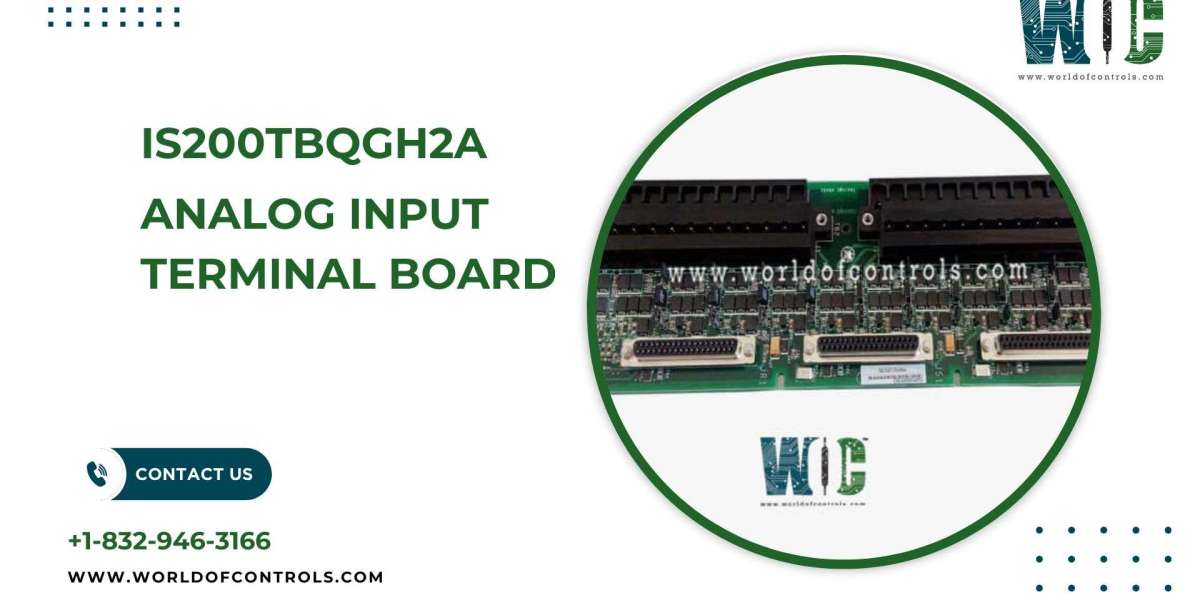In the high-stakes world of turbine control systems, reliable signal processing is critical for safe and efficient operation. One of the key components enabling this functionality within GE’s Mark VIe control system is the analog input terminal board. These boards serve as the vital link between field sensors and the control logic, ensuring accurate and real-time data acquisition from the turbine and its subsystems.
What Is an Analog Input Terminal Board?
An analog input terminal board is a physical interface that connects analog field signals—such as temperature, pressure, flow, or level readings—to the turbine control system. These signals originate from a variety of sensors installed throughout the turbine, boiler, and balance-of-plant equipment.
Unlike digital signals that are binary in nature (on/off), analog signals provide continuous values, which are essential for nuanced control and monitoring. The terminal board receives these signals and channels them to the control system’s processing modules for interpretation and action.
The Mark VIe Control System at a Glance
The Mark VIe is GE’s advanced turbine control platform, designed for gas turbines, steam turbines, and combined-cycle plants. It is modular, scalable, and capable of supporting complex control strategies with high availability and system redundancy.
Within this architecture, the analog input terminal board plays a foundational role by serving as the entry point for real-world analog data. These boards connect directly to input/output (I/O) modules, which digitize and process the signals for use in logic control, alarms, trends, and diagnostics.
Core Functions of Analog Input Terminal Boards
1. Signal Conditioning
One of the board’s primary roles is to prepare analog signals for accurate digitization. This process, known as signal conditioning, may include filtering out electrical noise, scaling voltage levels, and providing isolation to protect against ground loops or signal interference. Clean signals ensure that the control system receives reliable and actionable data.
2. Sensor Compatibility
Analog input boards support a wide range of sensors, including thermocouples, RTDs (Resistance Temperature Detectors), and transmitters for pressure or flow. These sensors are commonly used in turbine systems to monitor critical variables such as combustion temperature, bearing temperature, steam pressure, and fuel flow.
3. Cold Junction Compensation
When thermocouples are used to measure temperature, the board provides cold junction compensation—a function that corrects readings based on the ambient temperature at the connection point. This ensures accurate temperature measurements across a wide range of operating conditions.
4. Data Integrity and Fault Detection
Analog input boards are equipped with diagnostic capabilities that continuously monitor signal quality. If a sensor is disconnected, fails, or outputs erratic values, the board can generate alarms or fault signals. This functionality is essential in preventing operational issues and enabling predictive maintenance strategies.
5. Integration with I/O Packs
The analog input board integrates with Mark VIe’s intelligent I/O modules, often referred to as I/O packs. These modules digitize the analog signals and perform local processing before passing the data to the control processors. This modular approach simplifies system expansion and maintenance while maintaining high performance and reliability.
Why They Matter in Turbine Applications
In turbine operations, real-time monitoring of temperatures, pressures, and fluid levels is vital. Small deviations can lead to efficiency losses or, worse, safety hazards. Analog input terminal boards provide the high-resolution data necessary to detect these variations and respond appropriately—whether by adjusting control outputs, triggering alarms, or initiating protective actions.
Their importance spans across various turbine systems, including combustion chambers, rotor dynamics monitoring, heat recovery systems, and lube oil systems. Without accurate analog data, optimal turbine performance and long-term asset protection would be nearly impossible.
Conclusion
Analog input terminal boards are essential components in the Mark VIe control system, acting as the first point of contact between the physical plant and the digital controller. Through accurate signal handling, sensor interfacing, and system diagnostics, they enable operators to maintain performance, safety, and efficiency in modern turbine operations. In a highly automated and data-driven power industry, their role remains as critical as ever.
More Products








